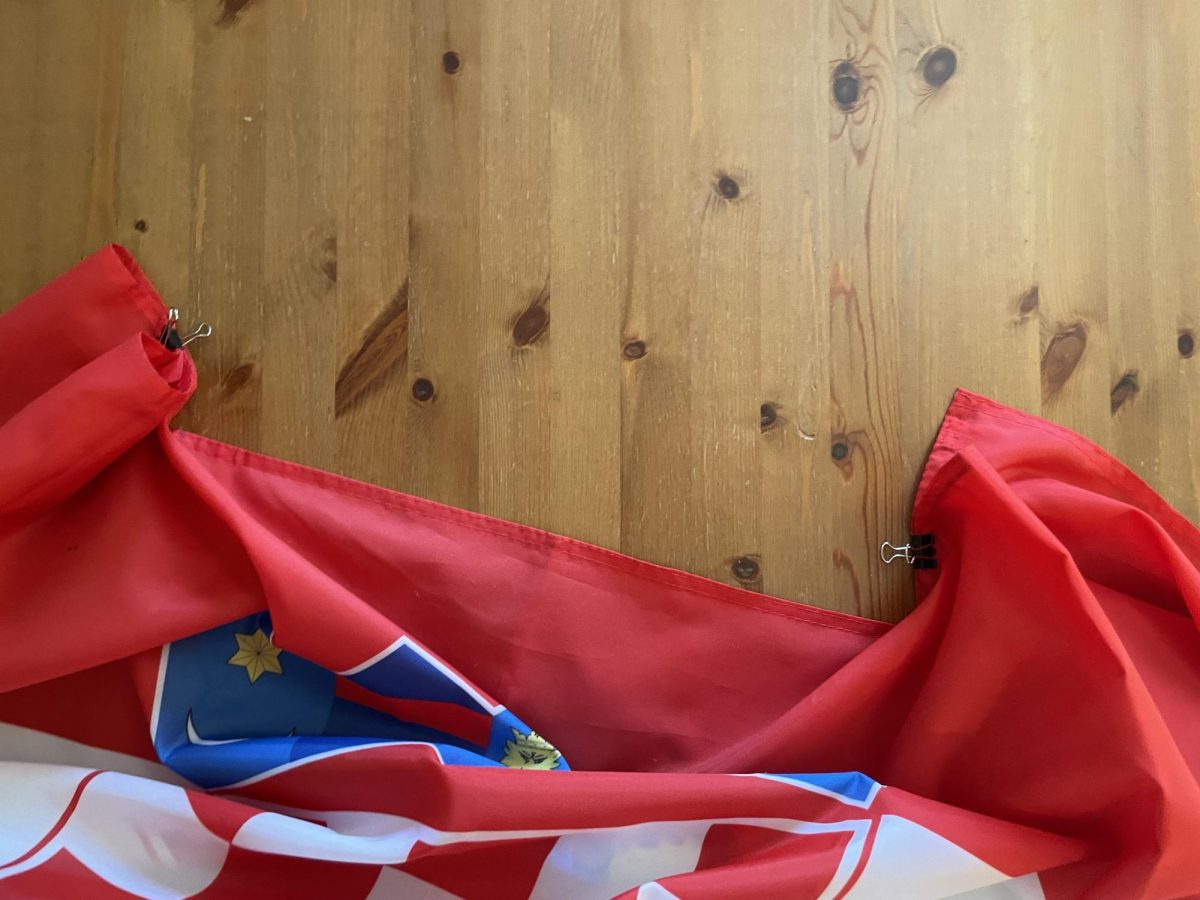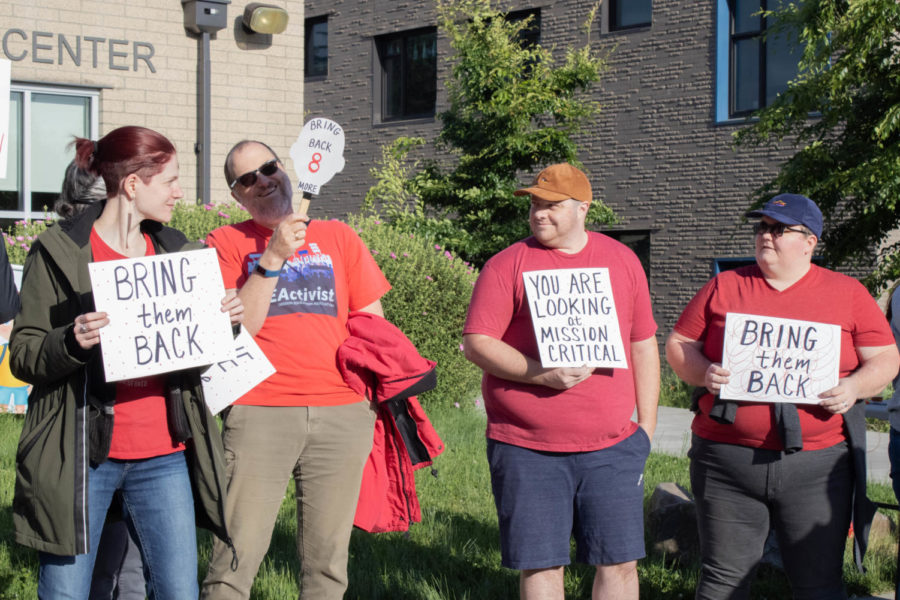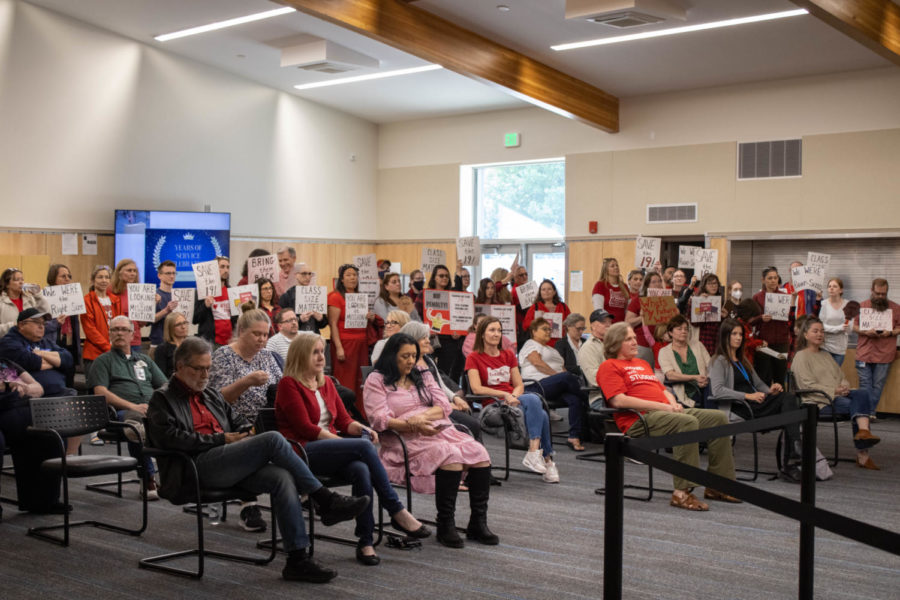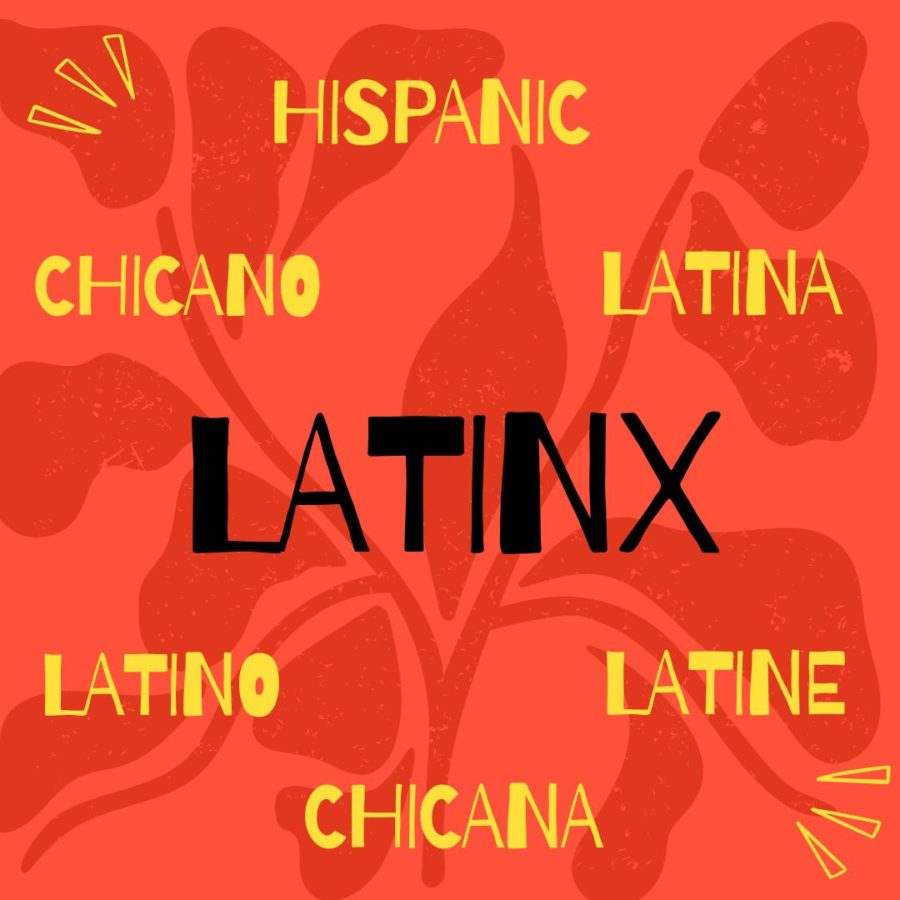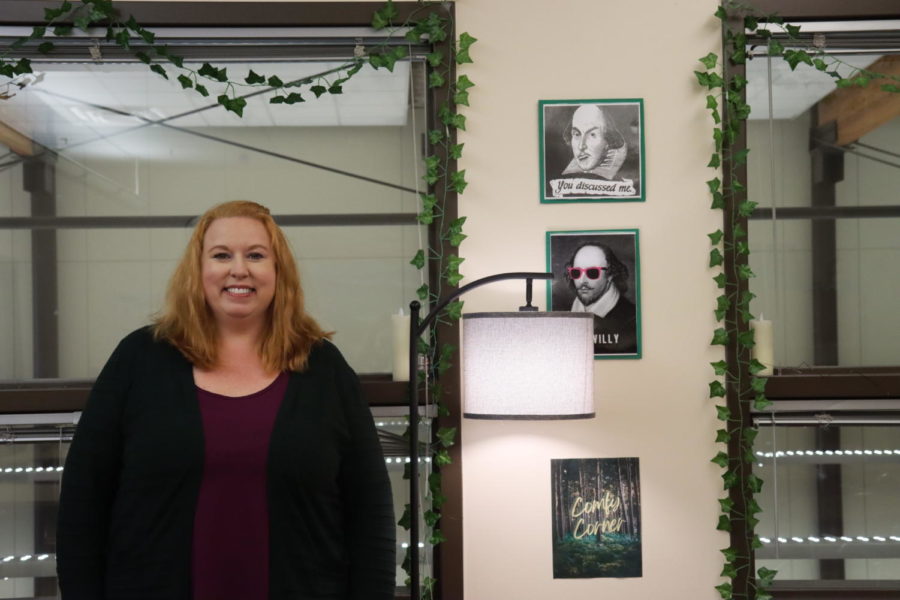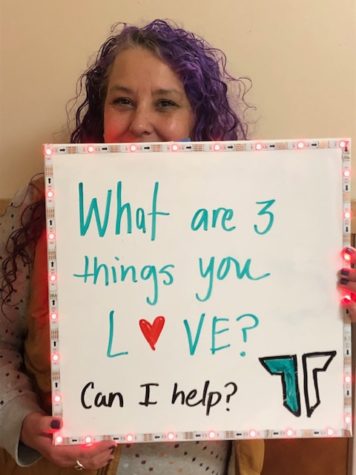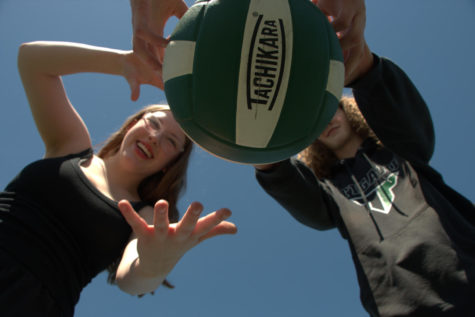CE2 celebrates 50th anniversary
In honor of the CE2 program’s half century, past students, staff, program developers and businesses share their stories
May 19, 2022
Tigard High School’s program for Community Experience for Career Education (CE2) turns 50 this month. Students and business participants in the CE2 alternative program are invited to the milestone gathering in the commons tonight to celebrate.
The CE2 model was designed in 1972 by Northwest Regional Educational Laboratory in Portland, now known as Education Northwest. They selected Tigard High School to test a pilot program in which students could learn about jobs and careers from non-paid experience in local business sites while also earning a standard diploma. Evaluation studies and careful documentation by researchers demonstrated that the program worked. Students acquired essential academic and social skills needed for adulthood.
Based on these studies, the Tigard model spread to over 100 school districts across the country over the next 10 years. Staff from these districts traveled to Tigard to observe and learn from local students, staff and employers. When Tualatin High School opened later, they adopted the program there as well.
CE2 is currently directed by Tony Hunt. To Hunt, CE2 is a community coming together for the education of a student where you have the businesses, teachers, parents and students all working together in order to teach and make the community better as a whole.
“CE2 is experiential, it’s actually putting thought into practice, going out into the community, doing what you actually need to be doing, learning from the business leaders, and finding out what works or doesn’t work for the student,” Hunt explained. “They are learning job skills and learning what kinds of paths they want to follow once they graduate, so it gives them a future.”
2022 marks Hunt’s 30th year in alternative education. Hunt arrived at CE2, with about 20 years of alternative education under his belt yet not knowing exactly what to expect out of the program. Hunt notes his position to be very dynamic as he works with businesses and students collaboratively. He pushes to always work towards what is equitable for the student, and how the program is working towards reaching the learning targets for the student both academically and in the community.
Hunt speaks to the relationship that CE2 has with the school.
“Alternative education tends to be misunderstood,” Hunt said. Students have never heard of it and staff doesn’t understand what they do in CE2. Hunt notes a constant need for PR and constantly having to educate the community about the program is quite exhausting, but necessary.
Principal Brian Bailey elaborates on CE2’s new physical place in the building.
“One of my favorite things from the new construction is that they took CE2 from a basement dungeon location that was kind of buried at the back of the school and built a brand new front and center area,” Bailey said. “There they have their own entrance and exit, they have their own space that was modernized, because they deserve to have their own space in order to run a quality program.”
The CE2 program is not commonly known to the average student. The program targets a very specific group of students in order to be effective. This group must remain small and manageable as they work on internships and partnerships out in the community.
“When you have a school of about 1800 kids, and a significantly smaller group of students that is engaged in this particular program, it means that some of the other kids may not know about it,” Bailey said.
Larry McClure was a researcher at Northwest Regional Educational Laboratory in 1972. His job was to document everything that was happening in the school CE2 setting, writing it all down so someday others around the nation could try it out. They developed handbooks on career technical education that could be used by others. He recalls that at the time of 1972, Tigard was known to be innovative.
“The basic concept was that students can learn while being out in the community and learn some very important things they would never be able to learn in a classroom setting,” McClure stated. “Now if you listen to the news, you hear more about careers in technical education, which is a similar thrust that we had in the 70s. We wanted to help kids make earlier decisions and explore what they really wanted to do someday.”
After a few years of testing the program at Tigard, McClure’s job at the laboratory turned into a place of training where people would come from all over the nation to observe the program and take it back to their school district. McClure noted that over 100 different school districts attended their training sessions. These districts received money from the federal government to help get them started on their own versions of CE2.
However, there was concern from labor unions at the time. They were worried that kids were coming in and taking their jobs. It was found that by involving the labor unions in the process of discussing if the program would work or not, the current workforce community jumped on board. The CE2 program had a board of directors representing views of parents and employers.
Tom Owens was an evaluator of the program when it got started and as it gained national attention. Owens was an evaluator of a few separate programs, a Rural Education Achievement Program, and a new experience based career education program that was just being developed. When Owens first came into the United States National Institute of Education he was very interested in finding out not only whether people liked the program, but also what impact it had on the students, community and families.
Owens worked with two other full time evaluators, working on discovering the effectiveness and how to improve the program under a variety of conditions, in different parts of the country and with different types of students. They took into account standardized testing, basic skills, life skills, and career development skills. Owens found it fascinating that students in the alternative education program did just as well as those that were sitting in classrooms in the basic skills. At the same time, these students are gaining additional skills in life experiences. For example, students learn how to relate to people, how to understand what questions to ask when they go to explore looking for a job, and find purpose in what they are doing.
Owens and his partners selected ten students randomly from the program to follow in depth. The team would go out and interview the employers where the students were working, they would watch and observe what the student was doing on the job, and talk to the parents. They had a much broader evaluation of what a student was capable of compared to what a simple paper and pencil test could provide.
“I chose to work with the experience based career education program because I had a feeling that many kids in school get really bored with learning and being told that the only reason they have to learn something is so they can take a test on it the next week, or they had to have that knowledge to get into the next grade level,” he said. “Many students didn’t see a purpose for it, so the idea of being able to see a program that was a live program where students got to see connections between the basic subject that they might be looking at or researching in a textbook and classroom setting can be done perhaps by working in a medical facility, for example.”
Owens was impressed at how CE2 got some students excited who were previously dreading the typical classroom setting. He adds that his son has ADHD and understands what it is like to not be able to sit still, concentrate and focus on one thing at a time.
Prior to working with CE2, Owens was a middle school teacher in Columbus, Ohio.
“In my experience teaching middle school, if some of the students got bored and my back was turned to the blackboard, they would jump out the fire escape to get away from the school,” he shared. “So I thought a program that would interest kids enough that they would be willing to sign up for it and go through the interview process to be selected was something that I was very interested in because I strongly believe in learning from experience alongside lifelong learning.”
Owens found an early misperception of the program; he found that some people believed it was a vocational training program that simply prepared jobs like repairing cars, where instead it prepared students to go into a field of law or medical careers, and being able to make that distinction looking at the broader understanding of what jobs are all about and prepare for becoming an effective citizen.
Andrea Baker was a learning manager at CE2 from 1974 to 1976. Baker came out of the Portland Public Schools where she taught traditional high school students. Baker relates joining the CE2 program as a breath of fresh air. Baker had contacts at the Northwest Regional Education Laboratory offering her a position in the program at Tigard. As a CE2 learning manager, Baker helped students manage their own learning because independence was an important part of the program. Baker individually met with students and got their credits by doing individual projects that included basic skills, life skills, career development, and the staff would weave in English, math and science into the projects. Her job was to come up with some ideas, write them a learning project that challenged them with the learning activities like interviewing, writing a report, and other things. After this, Baker would work with the students after they completed their projects, assess them, and discuss how it went.
Baker shares a memorable experience with one of her past CE2 students who was a poor reader. The student had no interest in working on their reading ability until they began working in an auto body shop in the community. It was the influence from an adult in the community that pushed the student to learn.
“I began to believe the phrase that motivation to learn develops out of a relationship between two people, and I still believe that,” Baker said.
Another one of her students thought they wanted to be a veterinarian, so they were placed at a vet clinic. The student saw a puppy die on the operating table. Due to this experience, the student went back to Baker flustered and no loner wanting to be a veterinarian because they could not watch that happen to animals regularly. Baker discussed the different kinds of careers the student could have surrounding animals. Baker notes that experience to be a great awareness explanation for her student.
“I loved every second of it,” she said. “I felt like I was making more of an impact than I was in the Portland Public Schools.”
Scott Frost is a 1975 alumnus. Frost heard of the program through other students that he knew of who were in the program. He had the opportunity to join the program his senior year. Despite being a strong student, Frost was interested in the independence that the CE2 program provided, as well as being out in the community.
“The idea of getting out of the classroom really drew me into the program at first. Being able to be off school premises [and] being able to pick a career field that I was interested in sounded really fascinating.” Frost shared. “In my time as a student in the program I went to a photography lab, a wood shop, and I learned how to install a telephone. I had really wide and varied experiences during my time in the program and it was absolutely amazing. I think it totally helped shape who I am today.”
Frost claimed to favor the hands-on learning experience that he received through the internships he took part in.
Since his time in CE2 Frost has had four successful careers. He was a working professional musician for 30 years, earning most of his living in that field. Frost also took part in the food business, washing dishes for his family’s restaurant. He had a career in the grocery business for 40 years. Frost owned a farm and learned how to grow food from the ground up for about 20 years. His produce was sold at local farmers markets, restaurants and the local food scene in Portland. Frost has now taken up working for Lyft, obtaining just over 26,000 rides.
“I think that idea of exploration and going into different fields really gave me a field for wanting to constantly grow, evolve and learn more,” Frost said. “One of my biggest takeaways from CE2 was really wanting to take it all in, and being in the real world and meeting new people made me a better person.”
Frost noted his maintained friendship with his teacher, Baker, for over 50 years as a result of the CE2 community.
“People that gave their time to me and mentored me really cemented how I lived my working career and how I feel about personal relationships. It’s all about people sharing and giving.” Frost explained. “I certainly hope the program continues so that kids have the alternative option if they feel that it would benefit them and maybe better suits their needs than a typical classroom scenario. I hope more kids get the opportunity that I had.”
Brad Mellinger is the vice president of operations at Northwest Fourslide where they manufacture precision metal parts, taking engaged metal, stamp it and form it into a product that is used by their customers. It has been about three years since Northwest Fourslide partnered with Tigard’s CE2 program. Mellinger’s goals were to partner with the community to be able to raise up talent within their company.
“I think we’ve been able to give kids a unique exposure through our company. They get to see how a small part is part of a bigger product and all the work that goes into building the products that we have today,” Mellinger elaborated. “Whether that product is an airplane, or a surgical device, the student gets to understand and learn that that certain piece they are working on plays an important role in the overall product.”
Mellinger holds pride in his company’s ability to be able to teach students to be able to discipline themselves and learn good work habits that they can then take those habits to whatever company they go to, apply themselves and be a valuable asset to whoever they work for.
“These students have encouraged me, shown me that there is talent that is out there, and that there is willingness to learn new things,” Mellinger shared. “I think it’s a great partnership to have and I think there is definitely room to improve the relationship we already have. One of those areas I think would just be in skill development, like what are the skills that the school wants students to learn and how can a company help support that.”
Senior Andrea Salinas Cortes is a student currently enrolled in the CE2 program. Prior to CE2 Salinas Cortes explained her school experience to be rather difficult as she came to Tigard her sophomore year. She found it difficult to pay attention and figure out what way she would be able to learn alongside her peers. Salinas Cortes found CE2 through her counselor’s recommendation. She notes the switch into the program to be a nerve wracking experience at first but quickly adjusted to the program, claiming it was the best decision she could have made for herself.
“Being a part of the program has shaped me in a good way,” she shared. “I have been able to see things a lot differently than I did before and I’ve come to learn more things about myself.”
Salinas Cortes has participated in three internships so far. She worked an internship at an embroidery shop where she helped package products, do paperwork and clean. However, her favorite internship has been while working at a TTSD administration office where she takes phone calls. She enjoys this internship because it allows her the time to do her own work and interact with people that come into the office.
“I wish CE2 to be able to grow, get more students, and that it gets acknowledged by everybody because it is an amazing program,” Salinas Cortes added.
Bailey commented on his time working with Hunt.
“He has been a steward for alternative education in the state of Oregon for longer than most people have even been in the profession and he’s got a passionate heart for helping kids who need more help than the average kid,” Bailey shared. “He is so creative in how he can find ways to help kids be successful that’s not a traditional route. He has meant a lot to Tigard High, to TTSD, and all of the other districts and schools he’s worked with in the state.”
Hunt invites students and community partners from over the decades to join the festivities on May 19 beginning at 7 pm.
“My life is richer because of our students,” Hunt said.



